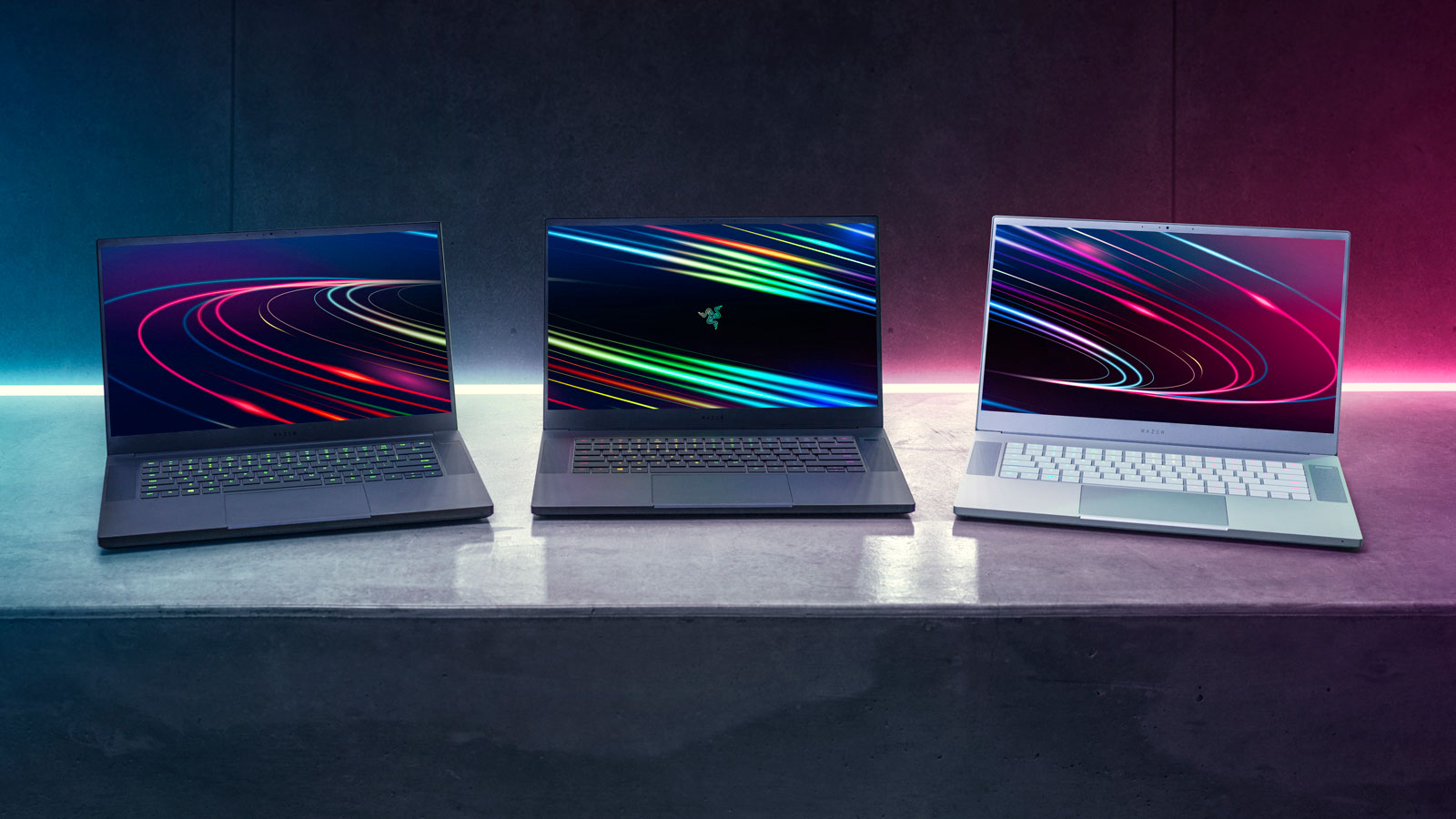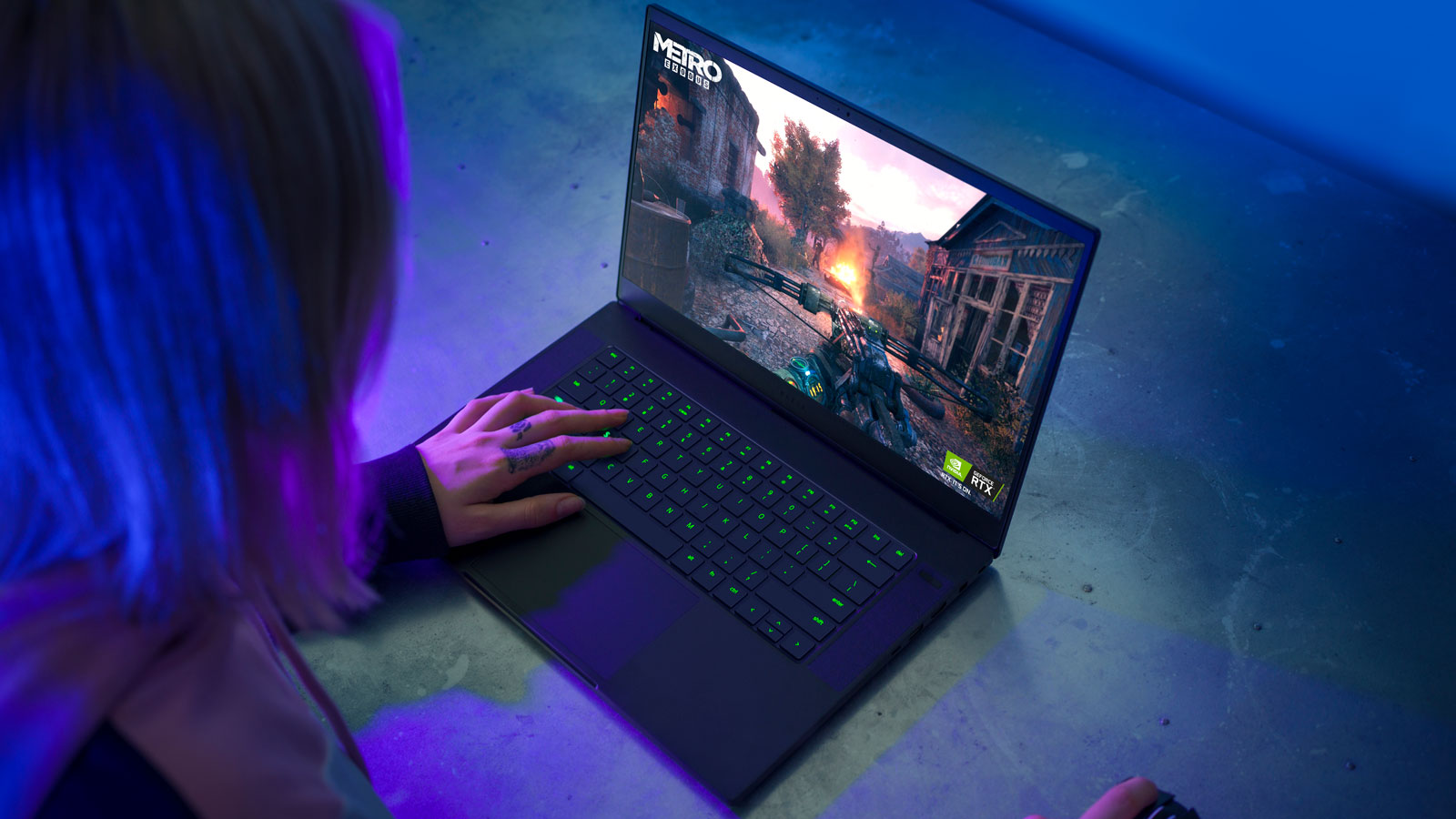Razer’s Blade 15 Gets 10th Gen Core i7, RTX Super, Plus Keyboard Fix

Razer is refreshing its Blade 15 gaming laptop today with Intel’s new H-series Core i7 processors and Nvidia GeForce RTX Super graphics. Additionally, it’s getting a slight keyboard redesign with an elongated right shift key, undoing a few years of poor typing experiences.
There will be two configurations coming in May: the Base Model (starting at $1,599.99) and Advanced Model (starting at $2,599/99). Here’s a quick look at their respective specs.
| Razer Blade 15 Base Model | Razer Blade 15 Advanced Model | |
|---|---|---|
| CPU | Intel Core i7-10750H (6C/12T) | Intel Core i7-10875H (8C/16T) |
| GPU | Up to Nvidia GeForce RTX 2070 Max-Q | Nvidia GeForce RTX 2070 Super Max-Q or 2080 Super Max-Q |
| RAM | 16GB DDR4-2933 | 16GB DDR4-2933 |
| Storage | 256GB or 512GB M.2 NVMe PCIe SSD | 512GB or 1TB M.2 NVMe PCIe SSD |
| Display | 144 Hz Full HD or 4K OLED | 300 Hz Full HD or 4K OLED Touch |
| Ports | Thunderbolt 3, 2x USB 3.1 Gen 1 Type-A, USB 3.2 Gen 2 Type-C, HDMI, Gigabit Ethernet | Thunderbolt 3, SD Card reader, 2x USB 3.2 Gen 2 Type-A, USB 3.2 Gen 2 Type-C, HDMI |
| Battery | 65Wh | 80Wh |
| Chroma RGB | Single-zone | Per-key |
| Windows Hello | No | Yes |
The Base Model will use the new Intel Core i7-10750H with 6 cores, 12 threads and a 5.0GHz boost clock. It also starts with an Nvidia GeForce GTX 1660 Ti and goes up to an RTX 2060 Max-Q or 2070 Max-Q. The Advanced Model uses an 8-core/16-thread Intel Core i7-10875H with a 5.1GHz boost clock, as well as either an RTX 2070 Super Max-Q or RTX 2080 Super Max-Q.
The differences don’t stop there. The Advanced Model has options for more storage and display options with touch or up to a 300 Hz refresh rate, as well as an SD card slot, though the Base Model gets an Ethernet port. Additionally, the more-expensive version has per-key RGB lighting (as opposed to single zone), Windows Hello functionality with an IR webcam and a larger battery. Both come with 16GB of RAM, expandable up to 64GB.
For those following the Blade line for the last few years, the keyboard is getting a welcome change on each version: the right shift key is being elongated and the up/down arrow keys are being moved to half-height, which should allow for a more natural typing experience.
We’re looking forward to testing the new Blade 15 when it lands in our lab--or in our living room if we're still working from home when the new Blades are slated to arrive in May.
Get Tom's Hardware's best news and in-depth reviews, straight to your inbox.

Andrew E. Freedman is a senior editor at Tom's Hardware focusing on laptops, desktops and gaming. He also keeps up with the latest news. A lover of all things gaming and tech, his previous work has shown up in Tom's Guide, Laptop Mag, Kotaku, PCMag and Complex, among others. Follow him on Threads @FreedmanAE and BlueSky @andrewfreedman.net. You can send him tips on Signal: andrewfreedman.01
-
Dantte I ordered a Razor Pro 17, and promptly returned it; the quality was good but there is one big negative that Razer and some other laptop manufacturers dont tell you... you can only run a single external monitor off the graphics card! This is not a hardware issue, its a manufacturer determined setting in the BIOS that you cant change. Connecting a TB3 dock with dual display will only allow a single display output on the dock to function and this also then disables the on-board HDMI when the dock is plugged in. If you want to run multiple displays you have to use a eGFX dock over TB3 or an older USB dock which creates virtual displays and runs off the CPU. I wonder if Razer has changed this with the new models?Reply
For most who plan to use the laptop strictly for person use, you'll probably have a single external monitor and for this its great. I was going to use it for both work and play, my work setup uses (3) external monitors and the laptop screen is the 4th. I use the same (3) external monitors for my person desktop which is getting to the end of its life cycle and I dont want to upgrade anymore, time for new and was hoping the razer could replace both. -
veridiux Reply
Hey, I'm not sure how old your Pro 17 was, but I have a Razer Pro 17 and Razer Blade 15 2019 and I run a 27" 1440p monitor and a 65" 4ktv off them at the same time. Maybe, I'm using a different setup than you are but I just wanted you to know that I can definitely run more than one display at once. Including the built in display, I run 3 at once.Dantte said:I ordered a Razor Pro 17, and promptly returned it; the quality was good but there is one big negative that Razer and some other laptop manufacturers dont tell you... you can only run a single external monitor off the graphics card! This is not a hardware issue, its a manufacturer determined setting in the BIOS that you cant change. Connecting a TB3 dock with dual display will only allow a single display output on the dock to function and this also then disables the on-board HDMI when the dock is plugged in. If you want to run multiple displays you have to use a eGFX dock over TB3 or an older USB dock which creates virtual displays and runs off the CPU. I wonder if Razer has changed this with the new models?
For most who plan to use the laptop strictly for person use, you'll probably have a single external monitor and for this its great. I was going to use it for both work and play, my work setup uses (3) external monitors and the laptop screen is the 4th. I use the same (3) external monitors for my person desktop which is getting to the end of its life cycle and I dont want to upgrade anymore, time for new and was hoping the razer could replace both.
